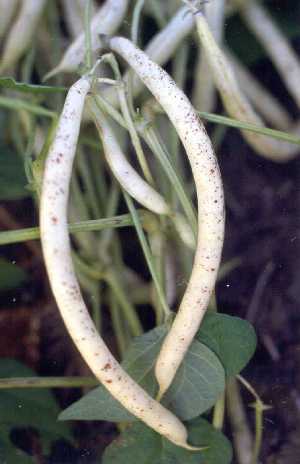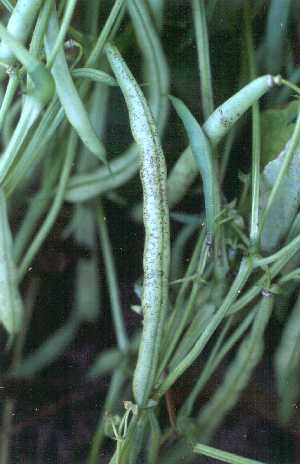Black pod spot (Rusty Pod Fleck) of snap beans
Learn about hosts, symptoms, disease and management of Black pod spot or Rusty pod fleck.
Introduction
The incidence of Black pod spot or Rusty pod fleck caused by the fungus Alternaria alternata has been increasing recently on snap beans. Infections can cause significant losses to fresh market snap bean growers. The superficial discoloration on snap beans grown for processing can be removed through the blanching process.
Hosts
The fungus is considered to be a weak parasite on many crops and has a wide host range including white beans and soybeans. It has been isolated from several common weeds including Lady's thumb, Nightshade, Ragweed, and Barnyard grass. The fungus is a common soilborne fungus that helps break down organic matter.
Symptoms
Alternaria alternata infect leaves of snap beans causing small water-soaked flecks and frequenly go unnoticed. Symptoms are most obvious on the pods which appear as orange, rusty or brown coloured flecks just before harvest, usually in August and September (Figures 1 & 2). The pod flecks are caused when spores of the fungus germinate and infect individual plant cell, which sends out a signal to surrounding cells to die. With the surrounding cells dead, the fungus cannot advance and only a small fleck results. This defense mechanism is referred to as hypersensitivity. When plants with this type of resistance are showered with large numbers of spores, numerous superficial flecks may occur, reducing the quality of yield.


Disease
The fungus survives on plant debris in the soil and on weeds. Spores produced by the fungus can be wind-blown or rain-splashed from decaying plant debris onto snap bean leaves, flowers, and pods. Spores require about 4 hours of leaf wetness to infect. Severe disease is often associated with plants under stress either during cool and wet or hot and dry growing conditions. Isolated rain showers or dew periods experienced during cool August mornings are often enough to initiate severe disease. Although symptoms appear on mature pods at the end of the growing season, there is evidence that infections occur earlier on blooms, immature pods, and leaves. The fungus remains inactive after early infection until the plant begins to naturally senesce.
Management
There are considerable differences in susceptibility of snap bean varieties to Black pod spot. Most yellow snap bean varieties and some green varieties, such as Striker, Prosperity, and Eureka, appear to be very susceptible whereas varieties such as Stallion, Bronco, and Green Crop appear less susceptible. Growers may consider growing the less susceptible varieties in later plantings when the disease is most likely to occur.
Losses to this disease can be avoided by harvesting early, however, this also results in reduced yield. There are currently no fungicides registered for controlling this disease.